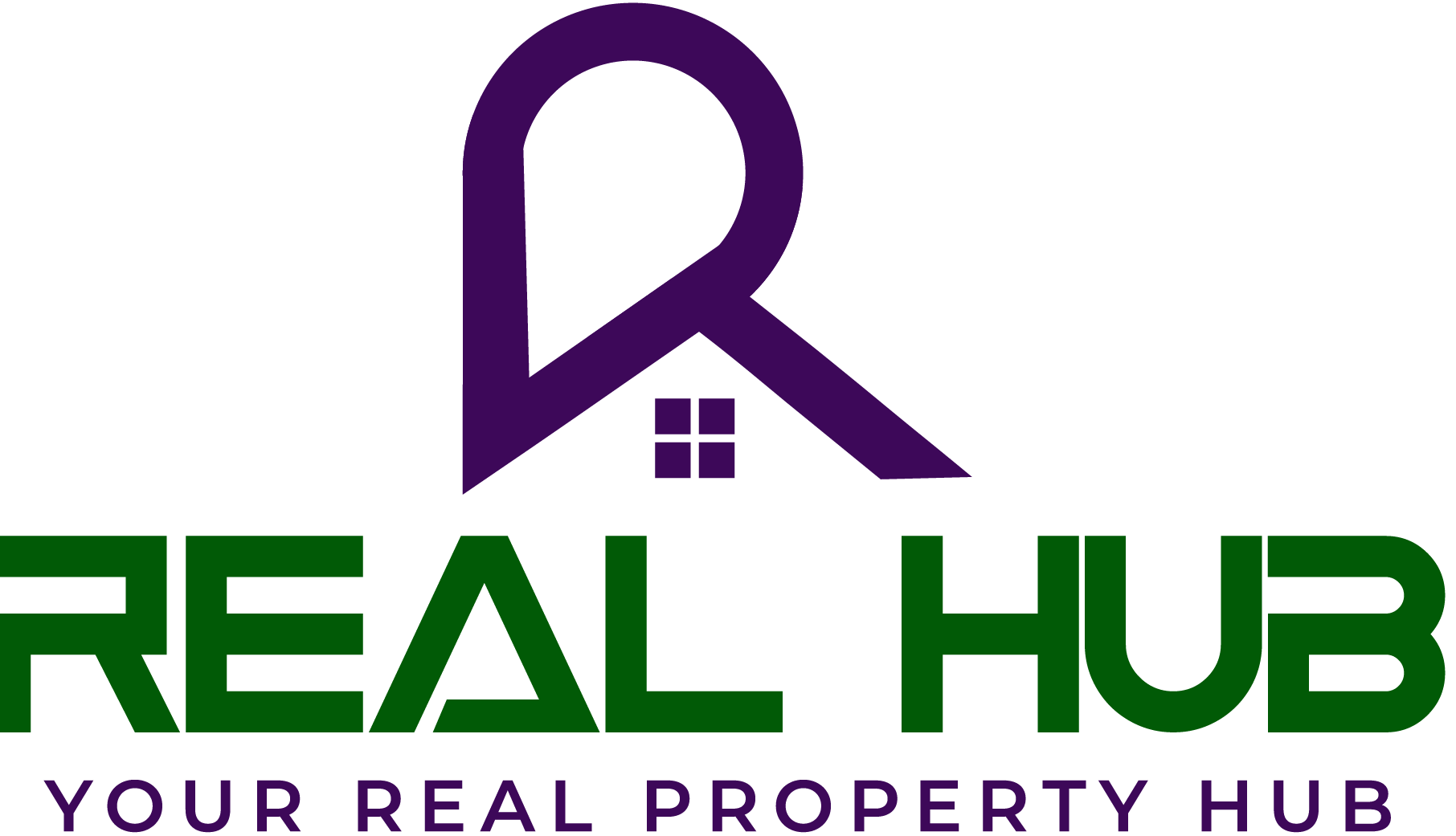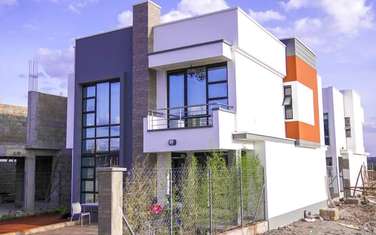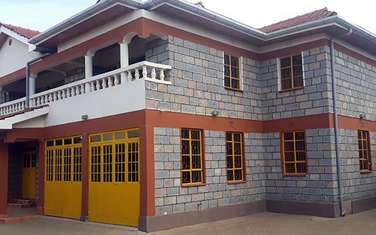What is Prime Property? A Comprehensive Guide to Prime Real Estate in Kenya 2024
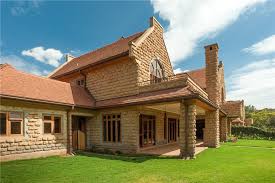
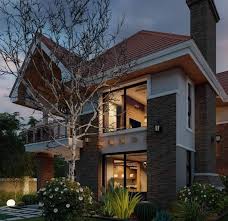
Prime property
Introduction to Prime Property
Prime property is a term frequently used in the real estate industry to describe high-value properties that possess unique attributes, making them highly desirable. These attributes can range from location and accessibility to the quality of amenities and potential for future development. In Kenya, the concept of prime property is particularly relevant given the country’s rapidly growing real estate market and its diverse range of investment opportunities. This comprehensive guide explores what constitutes prime property in Kenya, its characteristics, benefits, and how to identify and invest in such properties.
Characteristics of Prime Property
Strategic Location
One of the most significant factors defining prime property is its location. In Kenya, prime properties are typically found in well-established and rapidly developing areas. These locations are characterized by their proximity to central business districts, major highways, and essential services. In Nairobi, for instance, neighborhoods like Karen, Westlands, Lavington, and the Central Business District (CBD) are considered prime due to their strategic positions and robust infrastructure.
High Demand and Limited Supply
Prime properties are often in high demand but have limited availability, which significantly drives up their value. The scarcity of such properties ensures that they maintain their desirability and market value over time. Areas with high demand for residential, commercial, or mixed-use properties typically attract more investment and development.
Superior Amenities and Infrastructure
Another defining feature of prime properties is the presence of superior amenities and infrastructure. This includes high-quality roads, reliable water and electricity supply, security services, and proximity to schools, hospitals, shopping centers, and recreational facilities. In Kenya, prime properties are often found in areas with well-developed social and physical infrastructure, enhancing their appeal and livability.
Potential for Development and Appreciation
Prime properties are not only valuable for their current state but also for their potential for future development and appreciation. Investors are often attracted to these properties because of the opportunity for significant returns on investment. Factors such as planned infrastructural projects, urban expansion, and favorable government policies can further enhance the development potential of prime properties.
Scenic Views and Environmental Quality
In addition to functional attributes, prime properties often boast scenic views and high environmental quality. This could mean properties with views of mountains, lakes, or the ocean, or those located in areas with green spaces and parks. In Kenya, properties with views of Mount Kenya, the Great Rift Valley, or along the coastline are particularly prized.
Examples of Prime Property Locations in Kenya
Nairobi
Nairobi, Kenya’s capital, is home to several prime property locations. Areas like Westlands, Karen, Lavington, Kilimani, and the CBD are known for their high property values and demand. These areas offer a mix of residential, commercial, and mixed-use properties, supported by excellent infrastructure and amenities.
Mombasa
Mombasa, Kenya’s coastal city, features prime properties along its beaches and in upscale neighborhoods like Nyali and Diani. These properties are particularly attractive for their scenic views, proximity to the ocean, and tourism potential.
Naivasha
Naivasha, located in the Great Rift Valley, is known for its beautiful landscapes and lakeside properties. Prime properties in Naivasha often include luxurious lodges, resorts, and high-end residential homes with stunning views of Lake Naivasha and the surrounding mountains.
Kisumu
In Kisumu, prime properties can be found near Lake Victoria and in the city center. The growing economic activities and strategic location along the lake make Kisumu an attractive option for real estate investment.
Benefits of Investing in Prime Property
High Return on Investment
Investing in prime property often yields high returns due to the properties’ consistent appreciation in value. The high demand and limited supply ensure that these properties retain their value over time, making them a reliable investment.
Stable and Secure Investment
Prime properties are generally considered stable and secure investments. The established infrastructure, high demand, and superior amenities reduce the risk of devaluation, making these properties a safe haven for investors looking to preserve and grow their wealth.
Diverse Investment Opportunities
Prime properties offer diverse investment opportunities, including residential, commercial, and mixed-use developments. This diversity allows investors to tailor their investments to meet specific goals and market demands. For instance, prime residential properties can be developed into high-end housing complexes, while prime commercial properties can be transformed into office buildings or shopping malls.
Prestige and Quality of Life
Owning prime property is often associated with prestige and a high quality of life. These properties are located in desirable neighborhoods with access to top-tier amenities, providing a comfortable and luxurious living environment. For businesses, being located in a prime area can enhance their image and attract high-quality clientele.
Potential for Rental Income
Prime properties, particularly those in urban centers and tourist areas, offer excellent potential for rental income. High demand for quality rental spaces ensures that property owners can command premium rents, providing a steady and substantial income stream.
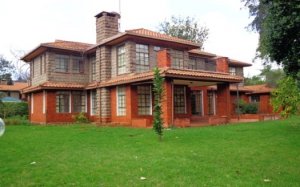 How to Identify Prime Property in Kenya
How to Identify Prime Property in Kenya
Conduct Thorough Market Research
Identifying prime property requires extensive market research. Potential buyers and investors should analyze market trends, property values, and future development plans in various areas. Understanding the dynamics of the local real estate market can help pinpoint prime locations and properties.
Evaluate Infrastructure and Amenities
Assessing the quality of infrastructure and available amenities is crucial in identifying prime property. Properties located near major roads, public transport, schools, hospitals, and shopping centers are typically considered prime. Additionally, the presence of reliable utilities and security services enhances the value of a property.
Consider Future Development Plans
Future development plans and projects can significantly impact the value of a property. Areas slated for infrastructural improvements, new commercial developments, or government initiatives are likely to see an increase in property values. Keeping abreast of such plans can help identify emerging prime properties.
Verify Legal Status and Zoning Regulations
Ensuring that the property has a clear title deed and complies with zoning regulations is essential. Legal disputes or zoning issues can complicate property transactions and affect the property’s value. Engaging a qualified lawyer to conduct due diligence and verify the legal status of the property can safeguard against potential problems.
Consult with Real Estate Experts
Working with experienced real estate agents and consultants can provide valuable insights into the prime property market. These professionals have in-depth knowledge of the local market and can offer guidance on the best investment opportunities.
Challenges of Investing in Prime Property
High Initial Investment
One of the most significant barriers to investing in prime property is the high initial cost. Prime properties, by definition, are located in desirable areas with excellent infrastructure, amenities, and potential for development. These factors drive up the price, requiring substantial upfront capital. For many investors, especially those without access to significant financial resources, this can be a daunting hurdle.
Moreover, the costs associated with purchasing prime property go beyond the initial purchase price. Investors must also account for additional expenses such as legal fees, taxes, and the cost of any necessary renovations or developments. These expenses can add up quickly, making the total investment significantly higher than initially anticipated.
Regulatory and Bureaucratic Hurdles
Navigating the regulatory environment in Kenya can be challenging for real estate investors. The process of acquiring prime property involves dealing with various government agencies and adhering to numerous regulations. This includes obtaining the necessary permits and approvals, ensuring compliance with zoning laws, and meeting environmental standards.
The bureaucratic processes involved can be time-consuming and complex. Delays in obtaining permits and approvals can hinder development projects and increase costs. Furthermore, the regulatory landscape in Kenya is constantly evolving, and investors must stay informed about changes in laws and regulations to ensure compliance. Engaging experienced legal counsel and working with knowledgeable real estate professionals can help mitigate these challenges, but it requires additional time and financial resources.
Market Volatility
The real estate market, like any other market, is subject to fluctuations. Factors such as economic conditions, political stability, interest rates, and changes in government policies can all impact property values. In Kenya, the real estate market has experienced periods of rapid growth and periods of stagnation or decline, influenced by various internal and external factors.
Investors in prime property must be prepared for these market fluctuations. A sudden economic downturn or political instability can lead to a decline in property values, potentially resulting in financial losses. Additionally, changes in government policies, such as new taxes or regulations, can affect the profitability of real estate investments. Diversifying investments and maintaining a long-term perspective can help mitigate the risks associated with market volatility.
Competition for Limited Supply
Prime properties are, by nature, limited in supply. The high demand for these properties means that investors often face intense competition when trying to acquire them. This competition can drive up prices, making it more challenging to secure desirable properties at a reasonable cost.
In Kenya, prime properties in areas like Nairobi, Mombasa, and other major cities are highly sought after. Investors must act quickly and decisively to secure these properties, which can sometimes lead to rushed decisions and insufficient due diligence. Building strong networks within the real estate community, staying informed about market trends, and working with experienced real estate agents can help investors navigate this competitive landscape more effectively.
Infrastructure and Development Challenges
While prime properties are typically located in areas with good infrastructure, there can still be challenges related to development. For instance, even in well-developed areas, there may be limitations on available utilities, such as water and electricity. Ensuring that these utilities can support new developments can require significant investment and planning.
Additionally, the process of developing prime property can be complex. Construction projects must adhere to stringent building codes and regulations, and delays in construction can lead to increased costs and lost revenue. Investors must carefully manage construction projects to ensure that they are completed on time and within budget.
Environmental and Social Considerations
Environmental and social factors can also pose challenges when investing in prime property. In Kenya, certain prime locations may have environmental constraints, such as proximity to protected areas or vulnerability to natural disasters like flooding or landslides. Addressing these environmental concerns can require additional investment in mitigation measures and compliance with environmental regulations.
Social considerations are equally important. The development of prime property can impact local communities, and investors must navigate these social dynamics carefully. Engaging with local communities, understanding their needs and concerns, and ensuring that developments benefit the broader community can help mitigate potential conflicts and enhance the overall success of the investment.
Legal Disputes and Title Issues
Legal disputes and title issues are common challenges in the Kenyan real estate market. The history of land ownership in Kenya is complex, and disputes over land titles can arise, complicating the acquisition and development of prime property. Investors must conduct thorough due diligence to verify the legitimacy of land titles and ensure that the property is free from legal encumbrances.
Working with experienced legal professionals can help identify and resolve potential issues before they become significant problems. Ensuring clear and uncontested ownership of the property is crucial for protecting the investment and avoiding costly legal battles.
Maintenance and Management Costs
Investing in prime property also involves ongoing maintenance and management costs. High-end properties require regular upkeep to maintain their value and appeal. This includes property management services, landscaping, security, and routine maintenance. The costs associated with maintaining prime property can be substantial, and investors must factor these expenses into their financial planning.
Additionally, effective property management is essential for maximizing rental income and ensuring tenant satisfaction. Investors may need to hire professional property management firms to handle the day-to-day operations, adding another layer of cost to the investment.
Long-term Commitment
Investing in prime property is often a long-term commitment. Realizing the full potential of the investment may take several years, especially if the property requires significant development or renovation. Investors must be prepared for this long-term commitment and have the financial stability to hold onto the property through market fluctuations and other challenges.
Patience and a clear long-term strategy are essential for successfully investing in prime property. Understanding the potential for future appreciation and development opportunities can help investors stay focused on their long-term goals.
 Future Trends in Prime Property in Kenya
Future Trends in Prime Property in Kenya
Urbanization and Infrastructure Development
Urbanization continues to be a significant driver of prime property demand in Kenya. As more people move to urban centers in search of better employment opportunities, education, and lifestyle amenities, the need for quality housing and commercial spaces grows. This urban influx is particularly pronounced in Nairobi, Mombasa, Kisumu, and Nakuru, which are expanding rapidly.
Infrastructure development plays a critical role in supporting this urban growth. The Kenyan government has embarked on several ambitious infrastructure projects aimed at improving connectivity and accessibility across the country. Notable projects include:
Nairobi Expressway
The Nairobi Expressway, a major road project, aims to ease traffic congestion in Nairobi by providing a faster route for commuters. This expressway will connect Jomo Kenyatta International Airport (JKIA) to the Nairobi-Nakuru highway, significantly reducing travel time. Properties along this corridor are expected to see a rise in value due to improved accessibility.
Lamu Port-South Sudan-Ethiopia-Transport (LAPSSET) Corridor
The LAPSSET Corridor is one of the largest infrastructure projects in Africa, designed to open up northern Kenya and connect the country to South Sudan and Ethiopia. The development includes a new port in Lamu, road networks, a railway line, and oil pipelines. This project is set to transform the economic landscape of northern Kenya and drive demand for prime properties in the region.
Standard Gauge Railway (SGR)
The Standard Gauge Railway (SGR) has already revolutionized transport between Nairobi and Mombasa, cutting travel time significantly. Future phases of the SGR project aim to extend the railway to Kisumu and eventually to neighboring countries. Properties near SGR stations are poised for significant appreciation due to enhanced connectivity.
Growth of Satellite Towns
As urban centers become increasingly congested, satellite towns are emerging as attractive alternatives for residential and commercial development. These towns, located on the outskirts of major cities, offer more affordable land prices and ample space for expansion. In Nairobi, satellite towns such as Kitengela, Athi River, Syokimau, and Ruiru are experiencing rapid growth.
Kitengela
Kitengela, located south of Nairobi, has transformed from a quiet town to a bustling residential and commercial hub. Its proximity to Nairobi, improved infrastructure, and availability of large tracts of land make it a prime location for investment. The construction of new roads and the presence of amenities such as schools and shopping centers further enhance its appeal.
Syokimau
Syokimau, situated along the Nairobi-Mombasa highway, has seen significant development due to its strategic location and proximity to JKIA. The presence of the SGR station in Syokimau has also boosted its attractiveness. The area is now home to several gated communities, commercial centers, and educational institutions.
Expansion of the Tourism Sector
Kenya’s tourism sector continues to be a major driver of prime property demand, particularly in coastal areas and regions near national parks. The government’s efforts to promote tourism and attract international visitors have led to increased investment in the hospitality industry. Coastal cities like Mombasa, Malindi, and Diani, as well as areas near major national parks like Maasai Mara, Amboseli, and Tsavo, are seeing heightened demand for prime properties.
Mombasa
Mombasa, with its beautiful beaches and rich cultural heritage, remains a top tourist destination in Kenya. Prime properties along the coast, especially in areas like Nyali, Diani, and Kilifi, are highly sought after for both residential and commercial purposes. The development of new resorts, hotels, and holiday homes continues to drive up property values.
Naivasha
Naivasha, located in the Great Rift Valley, is known for its scenic beauty and proximity to Lake Naivasha. The area has become a popular destination for both local and international tourists. Investments in high-end lodges, resorts, and residential properties are on the rise, capitalizing on the growing tourism sector.
Rise of Mixed-Use Developments
Mixed-use developments, which combine residential, commercial, and recreational spaces within a single project, are gaining popularity in Kenya. These developments offer a comprehensive living experience, providing residents with easy access to workplaces, shopping centers, entertainment, and other amenities. Mixed-use developments are particularly attractive in prime locations where land is limited, and demand for integrated living spaces is high.
Two Rivers Development
Two Rivers Development in Nairobi is one of the largest mixed-use developments in Kenya. It includes residential apartments, office spaces, retail outlets, and recreational facilities. The project has attracted significant investment and set a benchmark for future mixed-use developments in the country.
Garden City
Garden City, also located in Nairobi, is another prime example of a successful mixed-use development. The project combines retail spaces, residential apartments, and office blocks, along with green spaces and recreational facilities. Such developments are designed to create self-sufficient communities and reduce the need for long commutes.
Technology and Innovation Hubs
The rise of technology and innovation hubs in Kenya is creating new opportunities for prime property investment. Nairobi, often referred to as the “Silicon Savannah,” is home to several tech hubs and innovation centers. These areas attract young professionals and entrepreneurs, driving demand for high-quality residential and commercial properties.
Konza Technopolis
Konza Technopolis, also known as Kenya’s Silicon Valley, is a flagship project aimed at creating a world-class technology city. Located 60 kilometers southeast of Nairobi, Konza is designed to host technology companies, research institutions, universities, and residential areas. The development of Konza Technopolis is expected to significantly boost the demand for prime properties in the region.
iHub and Nairobi Garage
Nairobi’s tech ecosystem is supported by innovation hubs like iHub and Nairobi Garage. These spaces provide co-working facilities, networking opportunities, and resources for tech startups. The areas surrounding these hubs are becoming prime locations for residential and commercial investments due to the influx of tech professionals and entrepreneurs.
Sustainable and Green Building Practices
Sustainable and green building practices are becoming increasingly important in the real estate sector. Developers are adopting eco-friendly designs and construction methods to meet the growing demand for sustainable living. Properties that incorporate green building practices, such as energy-efficient systems, water conservation measures, and sustainable materials, are considered prime due to their environmental benefits and long-term cost savings.
Strathmore Business School
Strathmore Business School in Nairobi is an example of a green building that has received international recognition for its sustainable design. The building features solar panels, rainwater harvesting systems, and natural ventilation, setting a standard for future developments in Kenya.
The Hub Karen
The Hub Karen, a shopping mall in Nairobi, incorporates several green building elements, including energy-efficient lighting, water recycling systems, and landscaped gardens. Such developments not only enhance the quality of life for residents and visitors but also contribute to environmental sustainability.
Improved Real Estate Regulations and Policies
The Kenyan government has been making efforts to improve real estate regulations and policies to create a more transparent and investor-friendly environment. Initiatives aimed at streamlining land registration processes, reducing bureaucracy, and enhancing property rights protection are expected to boost investor confidence and drive demand for prime properties.
Digitization of Land Records
The digitization of land records is a significant step towards improving transparency and efficiency in the real estate sector. The government’s efforts to create a centralized digital database for land records will make it easier to verify property ownership, reduce fraud, and expedite property transactions.
Affordable Housing Program
The Kenyan government’s Affordable Housing Program aims to address the housing deficit by providing affordable homes for low and middle-income earners. While the program focuses on affordability, it also includes the development of infrastructure and amenities, which will enhance the value of surrounding prime properties.
Conclusion
Prime property represents the pinnacle of real estate investment, offering high potential for development, significant returns, and a prestigious living or business environment. In Kenya, the characteristics that define prime property include strategic location, high demand, superior amenities, development potential, and environmental quality. Investing in prime property requires careful research, legal due diligence, and a long-term vision. Despite the challenges, the future of prime property in Kenya is bright, driven by urbanization, infrastructural development, and economic growth. Whether you are an investor, developer, or potential homeowner, understanding the dynamics of prime property can help you make informed decisions and capitalize on the opportunities in Kenya’s real estate market.
